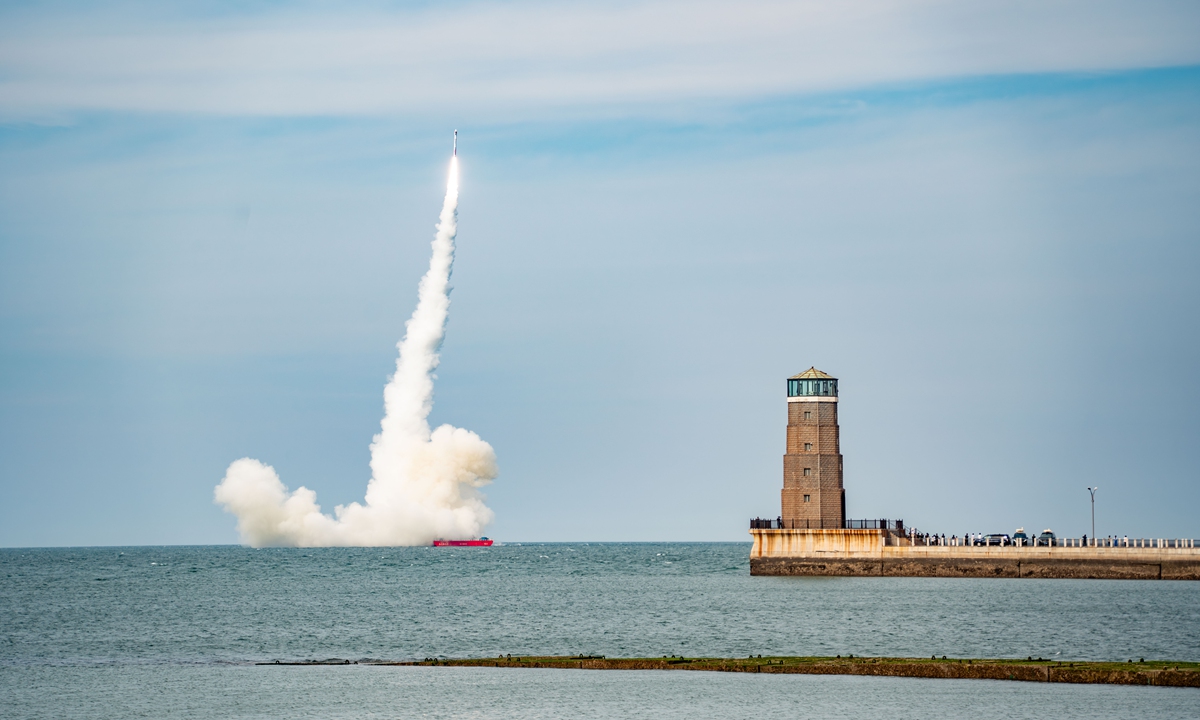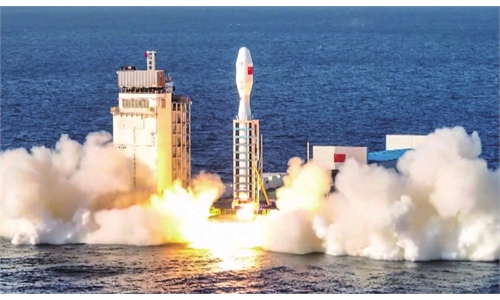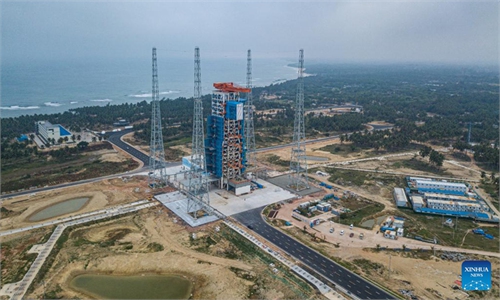China's Ceres-1 pulls off second successful sea launch, demonstrating increased maturity and enhanced adaptability for commercial use

Ceres-1 solid rocket, developed by private Chinese space firm Galactic Energy, blasts off from the sea off the coast of East China's Shandong Province on May 29, 2024. The mission can meet the launch needs of various orbital payloads and address the long-standing safety concerns regarding impact zones. Photo: VCG
China's Ceres-1 solid rocket has successfully conducted a second sea launch on Wednesday afternoon off the coast of East China's Shandong Province. This milestone highlights the commercial rocket's increased maturity and enhanced adaptability, positioning it to meet diverse orbital launch mission requirements for commercial missions, according to space experts on Wednesday.
The Wednesday mission successfully delivered four Tianqi satellites 25-28 into a low Earth orbit (LEO) at an altitude of 850 kilometers, according to the mission insiders.
The Ceres-1 sea launch model, developed by Galactic Energy based on the Ceres-1 rocket, is tailored for sea launches.
Ceres-1 has a diameter of 1.4 meters, a length of about 20 meters, a mass at take-off of about 33 tons and a liquid propellant upper stage. It can deliver 400 kilograms to LEO or 300 kilograms to a 500-kilometer-altitude sun-synchronous orbit (SSO).
It is a four-stage solid commercial launch vehicle, known for its strong flexibility, mission adaptability and economic launch costs. The rocket can flexibly choose launch points and impact zones, meeting the launch needs of various orbital payloads and effectively addressing long-standing safety concerns regarding impact zones, the Galactic Energy told the Global Times in a statement on Wednesday.
This mission marks Galactic Energy's second sea launch, it said, adding that to meet the requirements of the satellite's orbital inclination for this launch, the launch site location was flexibly adjusted.
The first sea launch for the model took place in September 2023, during which Tianqi satellites 21-24 were successfully sent into designated orbit.
This also signifies that the Ceres-1 series launch vehicle, as the only private rocket capable of both land and sea launches, has achieved flexible orbital adaptability and high-frequency launch capabilities, allowing it to quickly meet the launch needs of different satellite users, the firm explained.
Aerospace expert Pang Zhihao stated that the second sea launch proves the increased maturity of this rocket model. The capability for both land and sea launches enhances its adaptability. While sea launches pose challenges in terms of orbital height and inclination, they offer the advantage of safer impact zones. The ability to conduct sea launches demonstrates that China's private rockets can better meet satellite requirements by launching into the needed orbits.
The Tianqi constellation is a commercial LEO satellite communication network. Once completed, it will achieve global coverage, meeting the extensive data collection needs of governments, industries and individuals, according to the mission insiders.
It will also provide low-cost Internet of Things (IoT) information services, promoting the technological upgrade of China's IoT information industry and driving rapid industry development, they added.
Currently, the Tianqi Constellation is widely used in forestry, agriculture, emergency response, tourism, water resources, electricity, petroleum, marine, ecological environment, smart cities, as well as other fields. It is also making strides into the satellite direct-to-market for consumer electronics such as mobile phones, cars, walkie-talkies, wearable devices and emergency kits.
The four new Tianqi satellites (25-28) are networked satellites that can provide near real-time short data transmission services worldwide. Since the launch of the first satellite in 2018, its developer Guodian Gaoke, a Beijing-based commercial sci-tech firm, has successfully deployed and operated 25 Tianqi LEO IoT satellites.
Pang also noted that the four new Tianqi satellites are a significant addition to Guodian Gaoke's IoT constellation. With the launch of these four satellites, the total number of launched satellites now exceeds 20, forming a small constellation that can meet current needs.
As a private company, we must have our unique characteristics. Whether it is rockets or satellites, we should focus on meeting needs rather than pursuing a comprehensive approach. This way, we can establish our distinctive features, Pang said.




